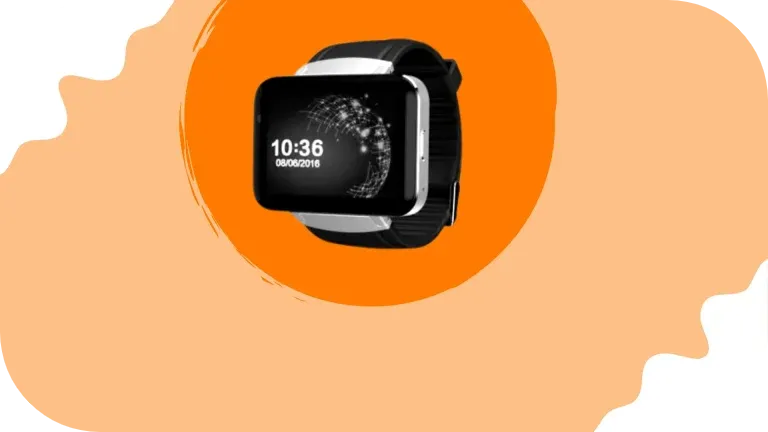While early versions were limited in terms of ability, and the most basic tasks like calculations, showing time, and 2D games, most modern smartwatches are an excellent complimentary device to smartphones, capable of executing numerous tasks.
With technological advancement, there is little difference between smartphones and smartwatches. Since 2015 smartwatch industry has shifted its focus, with primary attention diverted toward Smartwatch OS, Wi-Fi/Bluetooth connectivity, and compatible applications. They are also made to function as a portable media player. At the same time, some are also integrated with cellular network coverage, usually called phone watches, allowing the user to make calls using a smartwatch.
Although hardware varies with each brand, smartwatches are powered by a rechargeable lithium-ion battery. Some models use electronic paper or transflective to consume less. The display of a smartwatch is based on an electronic visual display model, LCD or OLED, majorly being used by manufacturers. Many devices are installed within a smartwatch, such as thermostats, pedometers, heart rate monitors, altimeters, barometers, GPS, and compasses, to record, analyze, and present different results.

Smartwatches can communicate with other external devices in case it is needed. With software getting complicated, a watch may have to establish a connection with another IoT device. It would ask to get data from the device, form a path according to the available medium (Wi-Fi, Bluetooth, Cellular, GPS), and retrieve the needed data. Then the microprocessor within it would process it accordingly. However, in some cases, a remote computer in the form of a smartphone might be needed to handle the exchange of information.
In recent years, smartwatches are also modified to fit the purpose of taking care of body vitals. Many watches are made every year to serve the nurses, patients, ER persons, and doctors’ needs with the inclusion of sensors able to record blood pressure, heart rate, sugar level, and oxygen level.
Features
With each new entry, a new feature is introduced to the market, and smartwatches are evolving tech capable of serving multiple features. Every company has something unique to offer, with Apple focusing on manufacturing high-end tech spades to Fitbit hyper-focused on bringing health trackers. It is a never-ending game.
Basic Features:
Every smartwatch would have these basic functionalities within it, and they are usually: calculators, calendars, receiving notifications, limited first-party applications, data sync with smartphones, digital time telling, and customization of watch faces.
Intermediate Features:
It is unlikely that every smartwatch in the market would have these. Still, a majority would be integrated with the following: the ability to be water resistant and dust resistant, receive calls, listen to music, view images, third-party applications support, GPS, and pinging.
Although there might be a price hike, most smartwatches capable of performing the following don’t come cheap.
Personalized Features:
In 2022 smartwatches have evolved a lot. Some features are still confined to a few because they are made to serve just one purpose. Health trackers are an excellent example. Despite being handy and stylish, their main functionality depends on their ability to record body vitals such as heart rate, blood oxygen level, sugar level, and blood pressure. Just the same way, fitness tracker features to focus on keeping a record of the following: calories burned, steps taken, and hours slept.
Common OS
The following are the most commonly used smartwatch OS today.
1) Asteroid OS
Asteroid OS is an open-source firmware replacement for Android Wear devices.
2) Infini Time
Based on the FreeRTOS real-time operating system, Infini Time is the firmware developed by Pine 64 for the PineTime smartwatch. It supports desktop Linux, the PinePhone, Android, and Sailfish OS as a companion for various features.
3) Harmony OS
Developed by Huawei, in line with their plan to port it for their various other smart devices. By January 2021, it has begun to replace Huawei’s previous LiteOS.
4) Flyme OS
An OS firmware designed and developed by Meizu based on Android Operating System.
5) Sailfish OS
A Linux-based OS made for multiple platforms and Sailfish smartwatches.
6) Tizen
Like Sailfish OS, Tizen is also based on Linux and available on various platforms. Samsung released the Samsung Gear 2, Gear 2 Neo, Samsung Gear S, Samsung Gear S2 and Samsung Gear S3 using Tizen as their OS.
7) Wear OS
Before its name change, Android Wear, Wear OS was Google’s property made for smartwatches.
8) wearOS
wears is developed, owned, and used by Apple Inc to run Apple Watches.
Industry Leader
Once considered an accessory to smartphones, smartwatches are companions to mobile computers now. In 2019, an estimated 14 million shipments were counted by the end of Q3, a significant shift in a paradigm since the early 2010s.
Today Apple, Samsung, Fitbit, Amazfit, Huawei, Fossil, and Garmin are leaders leading the innovation from both fronts. Each year sees an estimated 24% increase in revenue, which is not surprising given that 15% of tech consumers own wearable devices.

